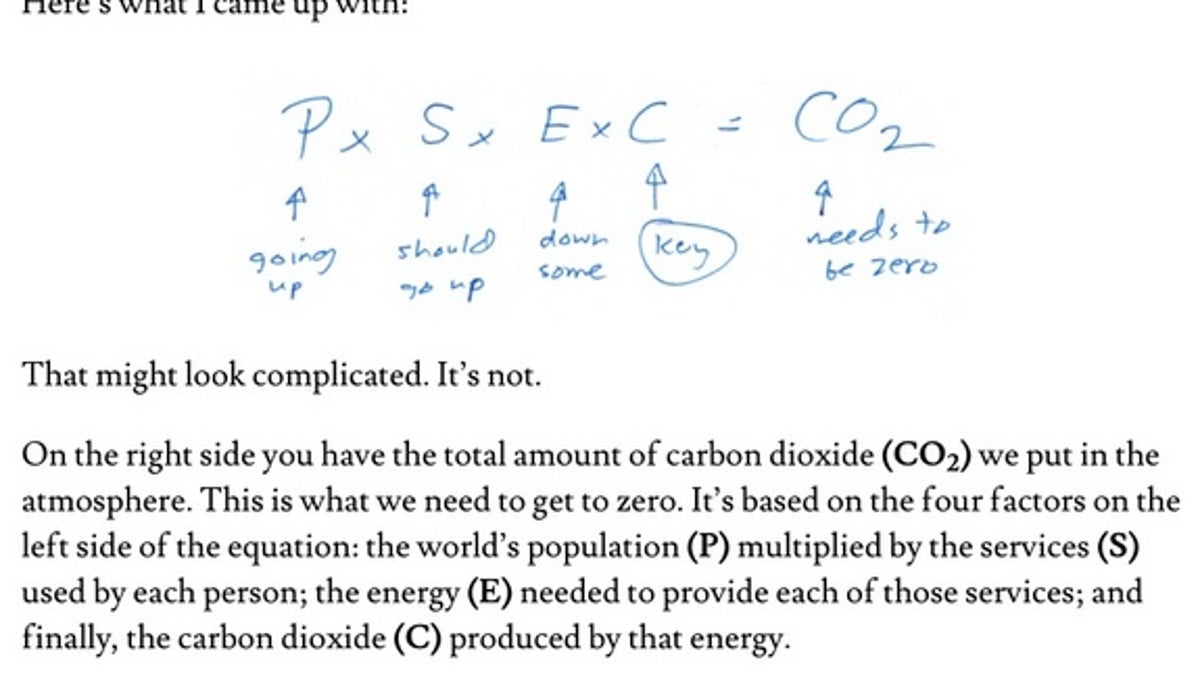
The equation that Bill Gates "discovered," according to a letter he recently published. (Bill & Melinda Gates Foundation | Screen grab)
Bill Gates just released a climate science equation that explains how the world can lower carbon dioxide emissions "down to zero," according to the 2016 edition the annual letter he and his wife, Melinda, published. This letter went online on Feb. 22.
Problem is, the equation isn't exactly new. It's widely known in the climate science community as the Kaya identity, and was reviewed in the scientific literature in 2002 in the journal Proceedings of the National Academy of Sciences.
But instead of grilling Gates about the origins of the formula, climate scientists are glad he's talking about it, said Michael Mann, a distinguished professor of atmospheric science at Pennsylvania State University. [The Reality of Climate Change: 10 Myths Busted]
"My guess is that he had seen this somewhere in the past, and sort of forgot where it came from," Mann said. "And thought that maybe he had come up with it. I'll give him the benefit of the doubt."
The genesis of Gates' equation might remain a mystery for now — the Bill & Melinda Gates Foundation didn't return Live Science's requests for comment. But no matter where the equation came from, it can help scientists keep tabs on carbon dioxide emissions, Mann said.
The Kaya identity explains the factors involved in carbon dioxide output, but it's not a "magical formula," Mann said. "It's a way of breaking our carbon emissions into a number of factors, each of which we can try to focus on separately."
However, none of the factors is independent of the others, and so cannot be viewed in isolation, Mann said.
Here is a snippet from Gates' annual letter explaining the variables:
